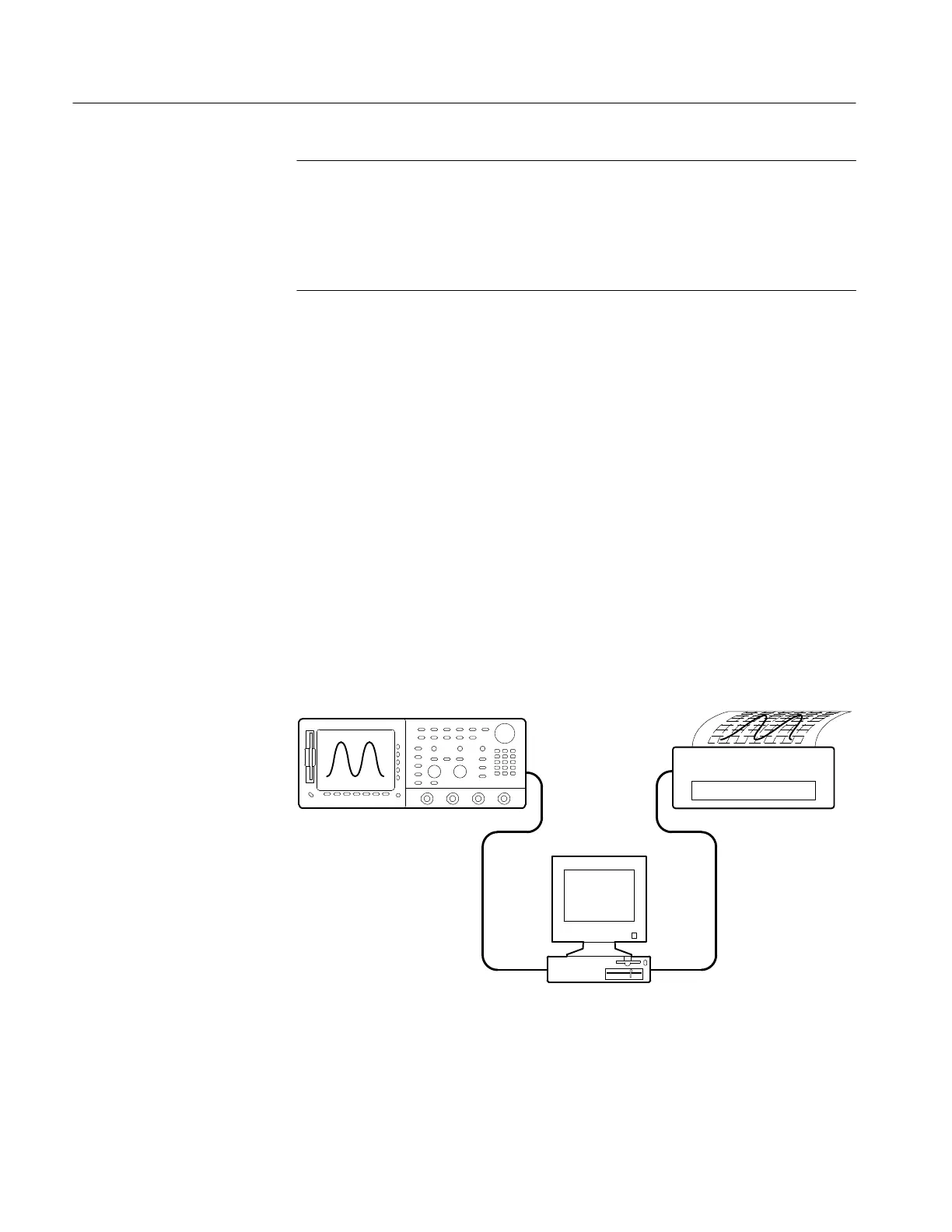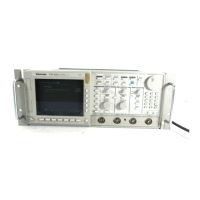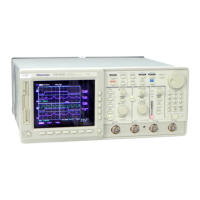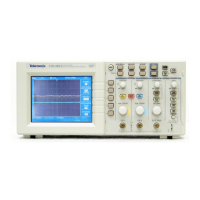Saving Waveforms and Setups
3–132
TDS 500B, TDS 600B, & TDS 700A User Manual
NOTE. Upon power on, the oscilloscope creates the “wild card” file
TEK?????.FMT for storing hardcopies, where “.FMT” is replaced by the
hardcopy format you select. Selecting this file and pressing Hardcopy stores a
hardcopy in a uniquely named, sequentially numbered file. For instance, the
oscilloscope saves the first hardcopy you save to the file TEK00001.FMT, the
second to TEK00002.FMT, and so on.
5. Press HARDCOPY to print your hardcopy to the selected file.
Saving files to the floppy disk provides a convenient way to store hardcopies.
You can print hardcopies stored on disk at a site remote from where the
hardcopies were captured using another TDS oscilloscope. Or you might load
stored hardcopies from disk into your desktop publishing software that runs on a
PC-compatible computer.
To make your hardcopies, use the procedures that follow.
Connect to a Hardcopy Device. To connect a controller with two ports between the
oscilloscope and the hardcopy device, connect from the oscilloscope GPIB
connector (rear panel) to the controller GPIB port and from the controller
RS-232 or Centronics port to the hardcopy device. (See Figure 3–74.) Use the
GPIB port to remotely request and receive a hardcopy from the oscilloscope
. Use
the RS-232 or the Centronics port on the controller to print output.
Digitizing Oscilloscope
GPIB Cable
Centronics or
RS-232 Cable
PC Compatible
Hardcopy Device
Figure 3–74:
To Print Using a Controller

